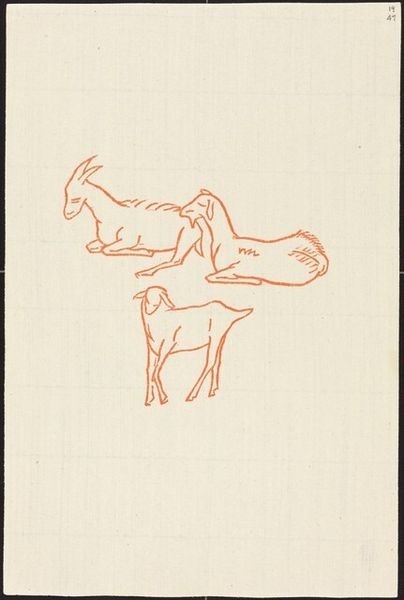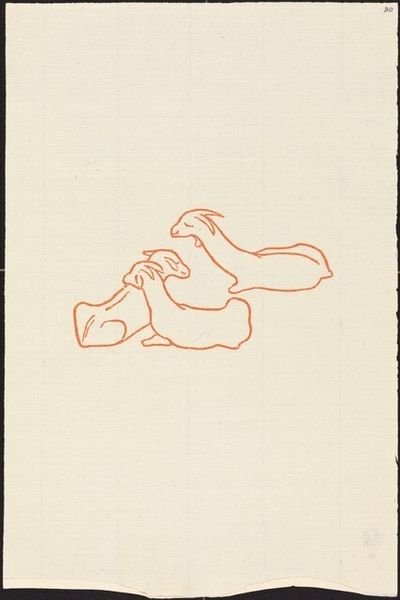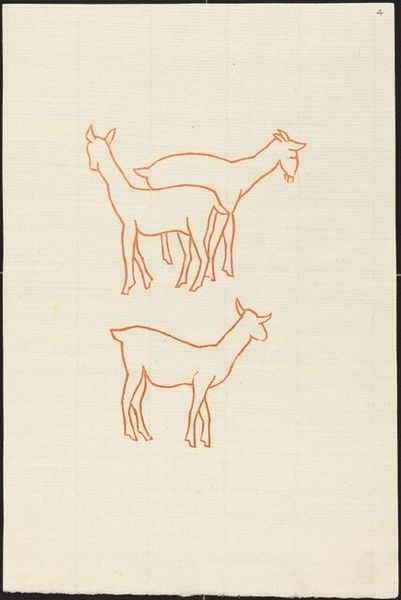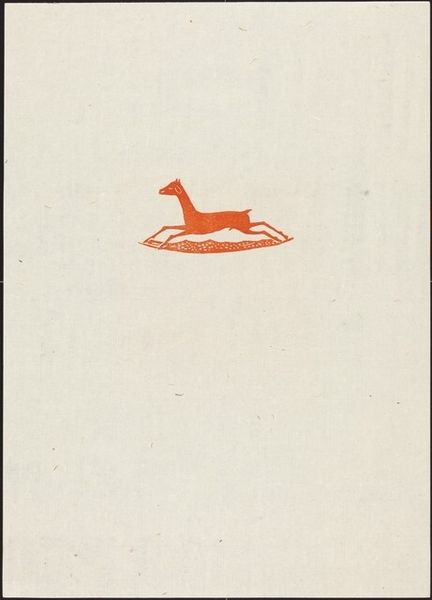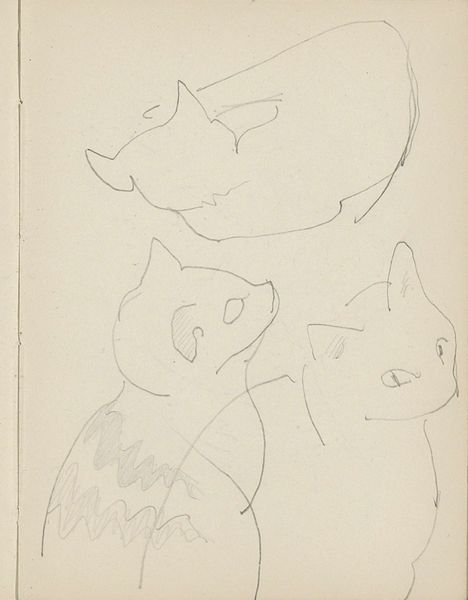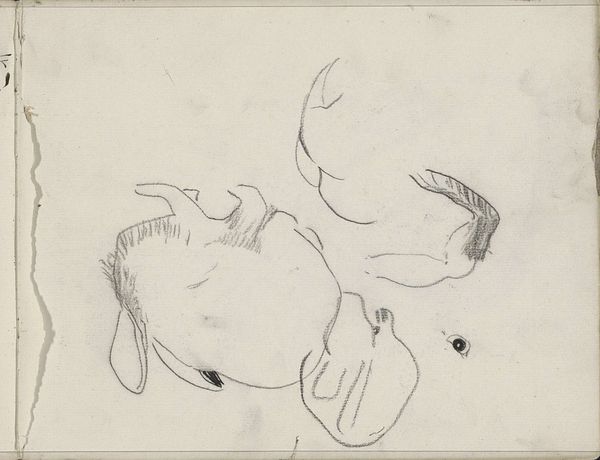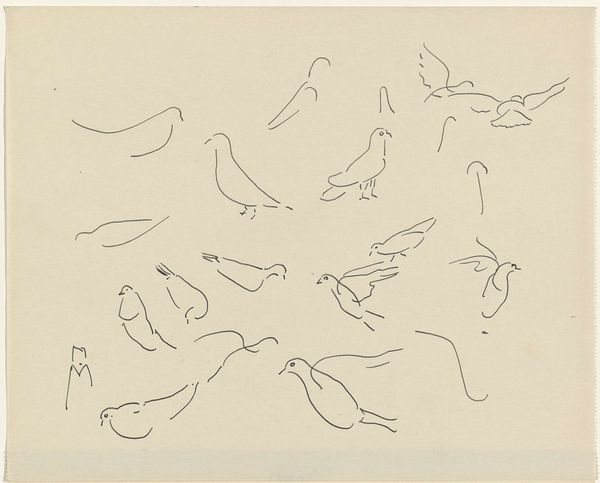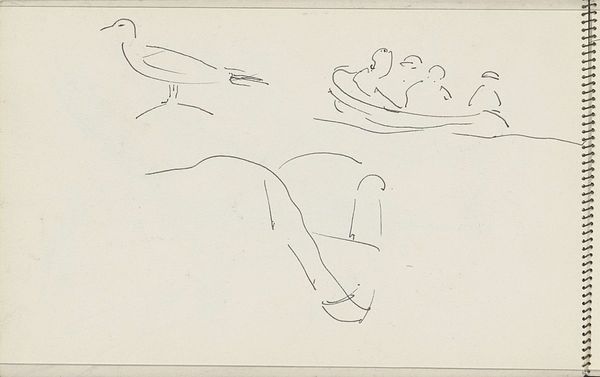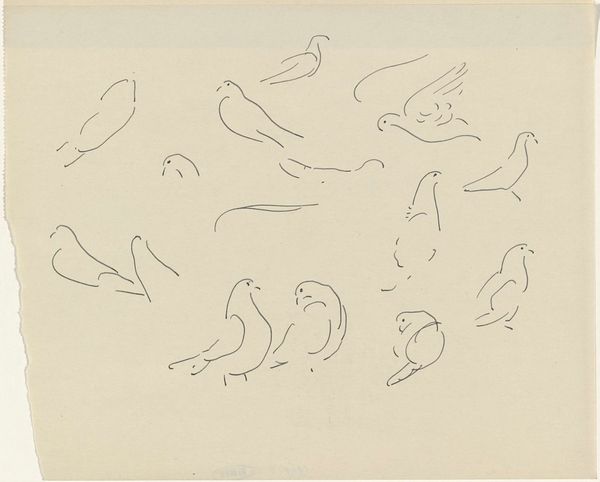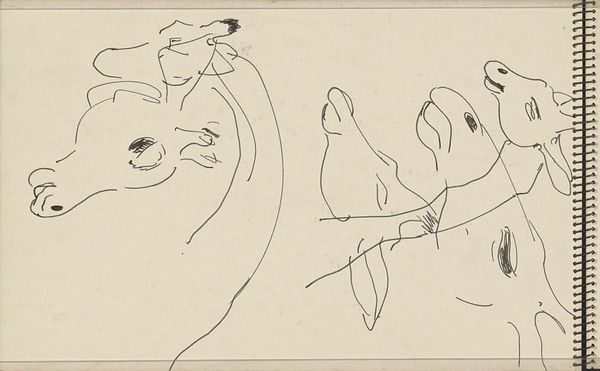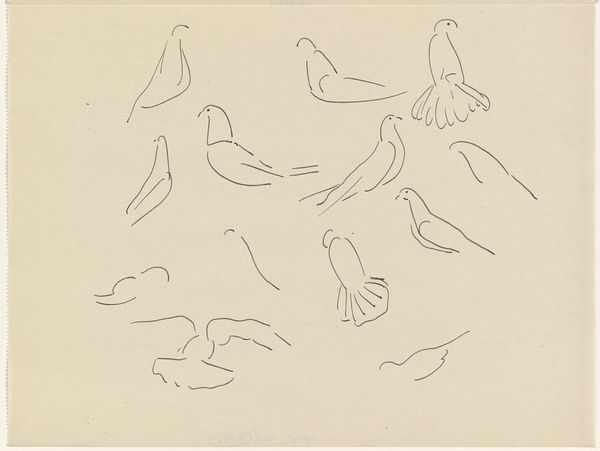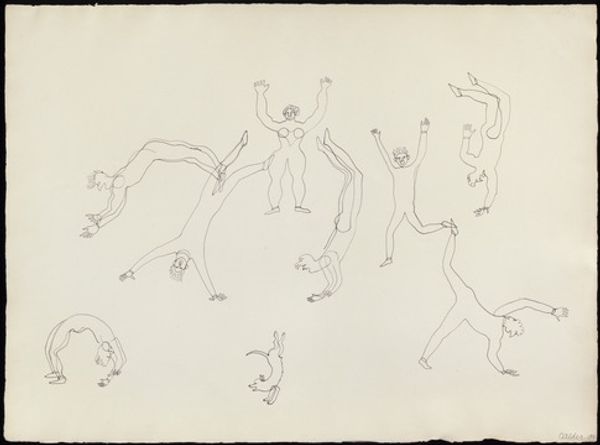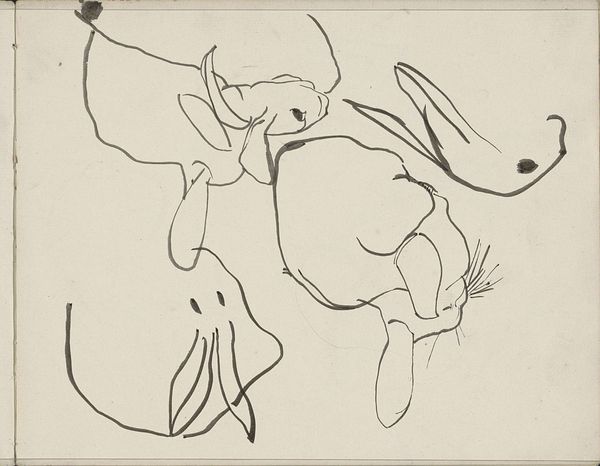
Second Book: Three Goats, Third Plate (Chevreaux, troisieme planche) Possibly 1937
0:00
0:00
drawing, print, ink
#
drawing
# print
#
landscape
#
figuration
#
ink
#
geometric
Copyright: National Gallery of Art: CC0 1.0
Curator: Maillol's "Second Book: Three Goats, Third Plate," potentially from 1937, offers a strikingly simple yet elegant arrangement of figures rendered in ink. What’s your initial take on it? Editor: Well, there’s something very ancient and elemental about it. It reminds me of cave paintings, or maybe figures on a Greek vase. It’s reduced, stripped bare to the essential lines, but very full of contained energy. Curator: Indeed, Maillol’s simplification draws attention to the very act of mark-making, the scarcity of line forcing the viewer to consider the artist's hand and process. These are, in essence, drawings intended as a part of a series or book, indicating the importance of repetition and printmaking's capacity for reproduction. How might that context affect our viewing experience? Editor: I suppose it suggests a conscious decision to tap into the deep well of human mark-making. Goats are hardly uncommon subjects through art history. And their postures, so artfully rendered, recall myths, legends of Pan and Arcadia – this almost archetypal, bucolic world. Curator: It's a beautiful synthesis, yes? He wasn’t merely interested in representing goats; the ink strokes create an ideal form that speaks to timeless themes of nature. Editor: It's quite brilliant how he’s captured the essence of those creatures with so little. Look at the geometry involved in defining movement and stillness. Do you think he used preliminary sketches? Curator: Given Maillol's sculptural background, the lines and forms likely benefited from intense prepatory material work; he's carving with ink, so to speak, suggesting his awareness of mass production. Editor: You know, seeing them together like this reminds me of the enduring power of visual stories. These simple figures whisper of pastoral myths and agricultural heritage, but brought to a modern eye. Curator: The artist, materials, and intention are inextricably linked, highlighting their significance in any visual culture. Editor: Yes, perhaps it really speaks to something in our collective memory—a visual vocabulary of the earth, that these goats inhabit through simple ink and print. Thank you for opening this up.
Comments
No comments
Be the first to comment and join the conversation on the ultimate creative platform.
